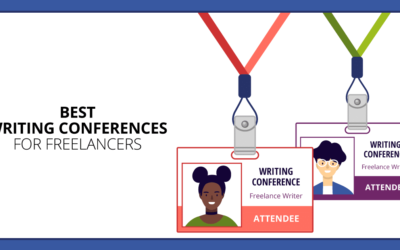Do you like to tell stories?
Case studies tell the story of how a customer used a product or service, and their great result.
Companies like to use them because they’re an effective marketing tool. That’s also the reason they pay well for case studies.
Case studies require that you interview the person who used the product/service before you write. The length of the story can vary from a couple of paragraphs (for which pay might be $100+) to four or more pages with charts, graphs and other graphics to help tell the story (for which you might receive $2,500+).
If you are interested in breaking into this lucrative niche, here are some steps to help you succeed:
1. Identify prospects — then, reach out. To find companies that want case studies, contact the marketing or communications department.
2. Thoroughly understand what your client wants from this story. How long should the case study be? Do they have other case stories they want you to match in tone? What are the marketing messages the case study is to reinforce? Familiarize yourself with the product, how it’s used and what it’s used for.
3. Prepare, prepare, prepare. You’ll be interviewing one of the company’s most precious resources: one of their customers. Treat them as such. You’ll get one shot to interview this person, generally by phone, so make it count. Write the questions you’d like to ask them and identify the factors that can be used to tell the story of improvement. Identify what graph or picture will help tell the story.
4. Submit your questions – first to your client for sign-off, then to the person to be interviewed. When reviewing the questions with your client, ask what you’ve left out. Incorporate any client changes and send your questions to the person to be interviewed so that they can also be prepared. Suggest that they use notes during the interview.
5. Establish rapport and conduct interview: Tell the interviewee that your job is to help them tell their story and that they will have the opportunity to approve your draft before it’s published. Then start in a relaxed manner with the spelling of their name and any other identifiers you’ll use like company, city and state, etc. Move to the interview questions they have in front of them. End with an open-ended question: “Is there anything else we haven’t discussed that is essential to the telling of your story?”
6. Write and get approval. Using the information from steps 1 and 4, write your case study and prepare the accompanying visual. When it seems ready for your client’s eyes, submit it, noting that after they are pleased with it, the interviewee still needs to sign off. Make any revisions required; then communicate with your interviewee. Follow up as necessary to assure that the company receives permission to publish.
Carol J. Kaemmerer tells stories about corporations’ life-enhancing therapies and products through powerful case studies and white papers. Learn more at Kaemmerer Group.
Got questions about writing case studies? Ask in the comments below.
Image: Stock.xchng – robtostes







 by
by 

